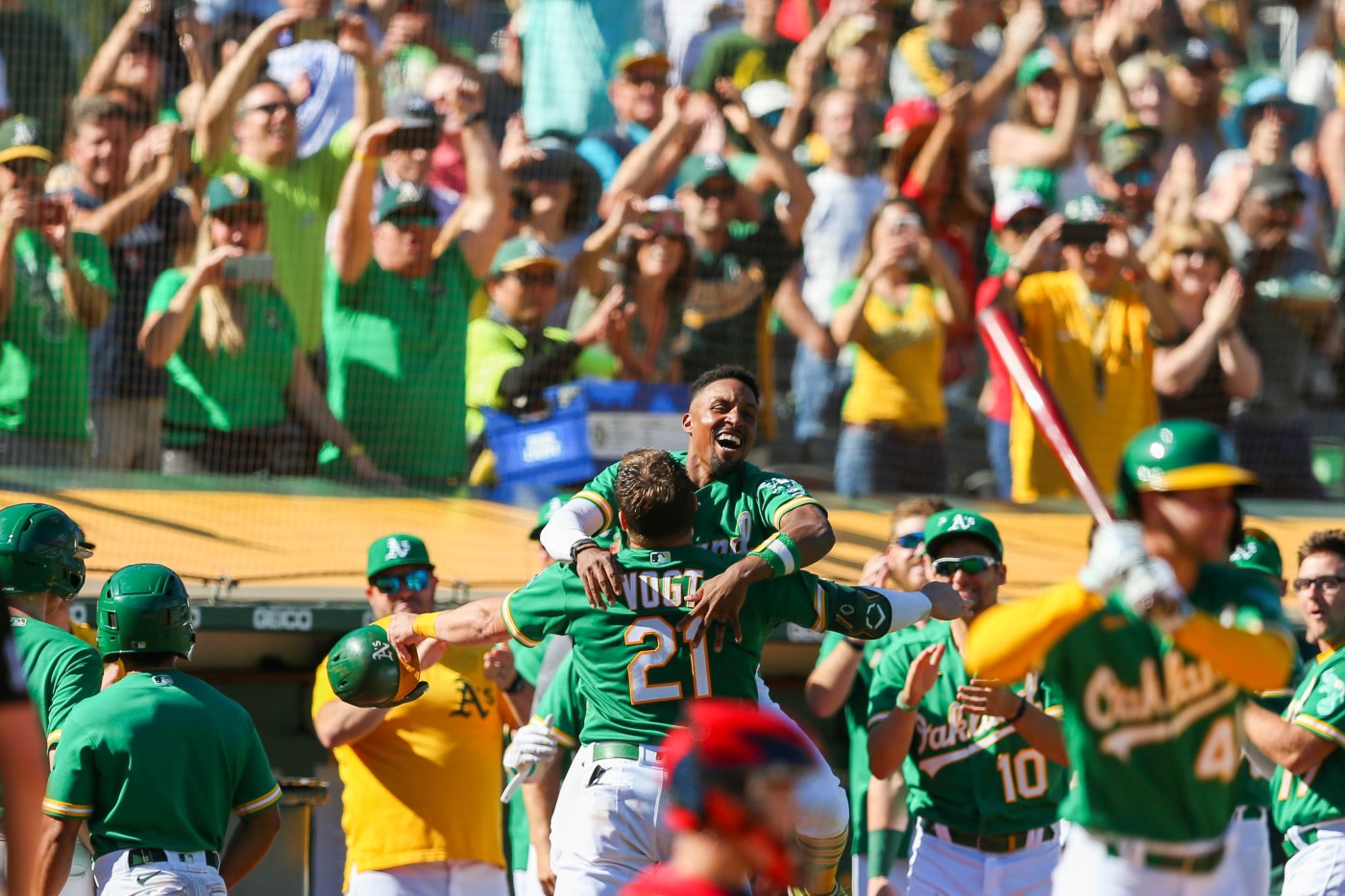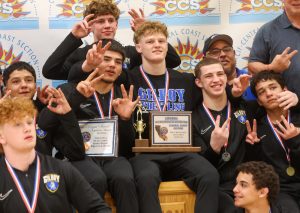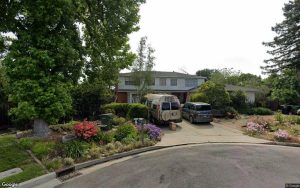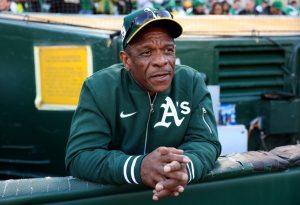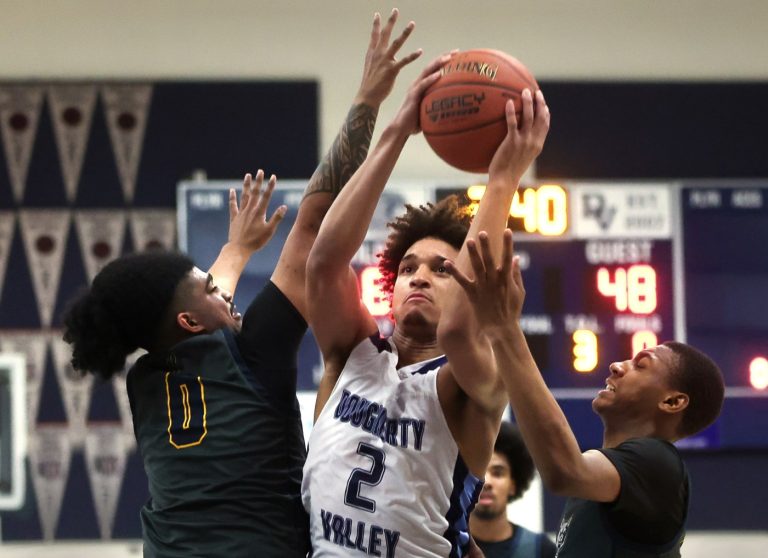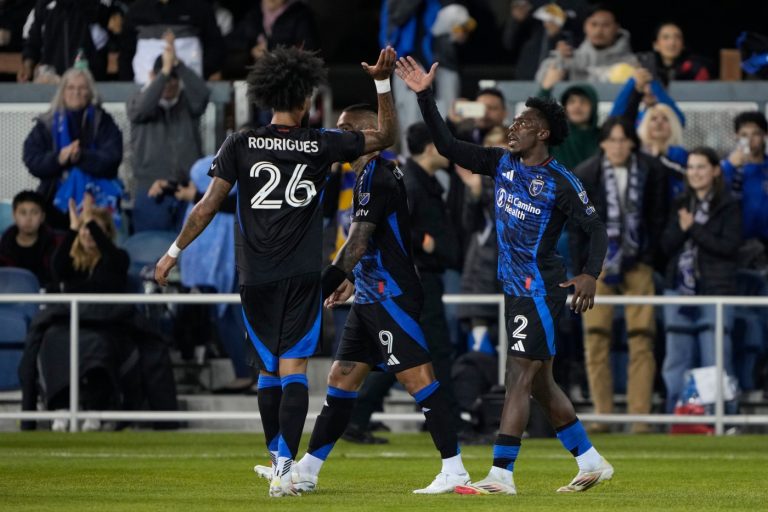The A’s are playing their final game in Oakland on Thursday and then end the season in Seattle over the weekend, but the franchise’s rich history will live on.
Oakland produced four World Series winning teams, won 17 division titles and was home to some of the biggest stars and larger-than-life characters, something that can’t be wiped away by a temporary move to Sacramento and and longer-term plan of Las Vegas.
Here is a look at some of the well-known and not-so well-known moments and milestones in the franchise’s time in Oakland.
FRANCHISE PLAYER
Let’s get it out of the way right away: Who was the best player in Oakland A’s history? Oakland Tech grad Rickey Henderson, and it’s not really close. If you go by his WAR (wins above replacement) Henderson’s 72.7 WAR is miles ahead of No. 2 Sal Bando (50.5). Henderson, enshrined in the MLB Hall of Fame in 2009, is Oakland’s all-time leader in a wide variety of categories, including on-base percentage, runs scored, total bases, and of course, stolen bases.
Oakland’s career hit leaders:
895 – Rickey Henderson
673 – Carney Lansford
652 – Campy Campaneris
639 – Eric Chavez
625 – Reggie Jackson
ORG XMIT: NY204 ** ADVANCE FOR WEEKEND EDITIONS, JULY 25-26 ** FILE – In this May 1, 1991, file photo, Oakland Athletics’ Rickey Henderson celebrates and raises third base after setting the all-time stolen base record during the Athletics’ baseball game in Oakland, Calif., against the New York Yankees. The stolen base was Henderson’s 939th, moving him past Lou Brock. On Sunday, July 26, 2009, Henderson will be inducted into the Baseball Hall of Fame. (AP Photo/Eric Risberg, File) A.P. Photo
ACE OF ACES
Picking the greatest pitcher in Oakland history is no small feat. Many rotations – and eras – featured multiple aces. There was Catfish Hunter, Vida Blue and Ken Holtzman on the 1970s World Series teams. Mike Norris, Matt Keough, Steve McCatty, Rick Langford and Brian Kingman were the Five Aces of the Billy Ball era. You might not know it from the movie, but the Moneyball era wouldn’t have existed without Barry Zito, Tim Hudson and Mark Mulder. Then there are closers like Rollie Fingers and Dennis Eckersley to consider. But based on WAR, Huddy goes down as Oakland’s all-time best on the mound, largely because his 92-39 record is the franchise’s best winning percentage (.702).
Oakland Cy Young winners
Vida Blue (1971)
Catfish Hunter (1974)
Bob Welch (1990)
Dennis Eckersley (1992)
Barry Zito (2002)
Runners-up: Mike Norris (1980), Steve McCatty (1981), Eckersley (1988), Dave Stewart (1989), Tim Hudson (2000), Mark Mulder (2001)
A’s three 20 game winners, Jim “Catfish” Hunter, Vida Blue and Ken Holtzman.Photo Ron Riesterer
HOW IT STARTED
After moving from Kansas City following the 1967 season, the A’s opened the Oakland era on the road in Baltimore. The Oakland A’s played their first game on April 10, 1968, at old Memorial Stadium. They lost 3-1, but a young outfielder named Reggie Jackson hit the second home run of his career – he’d go on to hit 561 more. The A’s reboot had been scheduled a day earlier, but was postponed because of the funeral of Martin Luther King Jr. John Donaldson, who briefly wrestled away the second base job from Dick Green, who became a mainstay of the A’s World Series-winning teams in the early 1970s, collected Oakland’s first hit – a single to center with one out in the second inning off Tom Phoebus. Jim ‘Catfish’ Hunter, two days after turning 22 but entering his fourth full season in the majors, started for the A’s and took the loss despite allowing just two runs and seven hits (and collecting one of the A’s seven hits) in six innings.
WIN NO. 1 DIDN’T TAKE LONG
The Oakland A’s didn’t play their second game until three days after their debut in Baltimore, but it was worth the wait. Sal Bando, who’d assume the role of The Captain of the Swingin’ A’s squads in the 1970s, homered to spark a four-run sixth at Washington’s D.C. Stadium and Oakland earned its first win: 9-6 over the Senators. Chuck Dobson earned the win, his first of 58 he’d record in Oakland’s first four seasons before elbow issues ended his career just as the franchise began to break through.
Oakland, CA October 21, 1973: Oakland Athletics third baseman Sal Bando jumps onto the pile of players after the final out in game seven of the 1973 World Series at the Oakland Coliseum. (Russ Reed/Oakland Tribune)
FINAL TALLY
The A’s 4,613 regular-season wins through Tuesday are the sixth-most in the majors since they arrived in Oakland, trailing only the Yankees, Dodgers, Red Sox, Cardinals and Braves. That’s a LOT of renditions of Kool & the Gang’s “Celebration” played over the Coliseum speakers after every home win since 2015, a tradition that was mostly interrupted (“Rock and Roll All Nite” by KISS was briefly used for night-game wins) since 1981. As well as success, there were the lean years (exacerbated at multiple points of the Oakland era as the rosters were stripped of stars for cost-cutting measures), occasional stadium malfunctions and frustrating ends to promising seasons – especially in the early 2000s when the A’s lost four straight best-of-five-game division series despite holding 2-0 series leads twice and went 0-9 in potential clinching games. In all, Oakland played in the World Series six times, winning in 1972 (Reds), 1973 (Mets), 1974 (Dodgers) and, of course, the Bay Bridge World Series against the Giants in 1989 that was interrupted by the devastating Loma Prieta earthquake. Oakland played for the AL pennant 11 times and reached the playoffs (including wild-card games) 21 times in 57 seasons.
HOME SWEET HOME
Major League Baseball debuted in Oakland on April 17, 1968. The Coliseum crowd was great – a season-high 50,164 – but the Orioles’ Dave McNally was even better, holding the A’s hitless until Rick Monday led off the sixth with Oakland’s first home hit – a home run. The only other A’s hit was a single by a 23-year-old utilityman named Tony LaRussa. The A’s first home win came a day later – 4-3 in front of an announced attendance of 5,304 – when Jackson scored on Donaldson’s sacrifice fly in the 13th inning. The win went to left-handed reliever Paul Lindblad, who spent parts of eight seasons in the A’s bullpen and earned the win in Game 3 of the 1973 World Series against the Mets.
Here’s a look at the A’s who played the most games at the Coliseum
886 – Rickey Henderson
720 – Sal Bando
711 – Reggie Jackson
679 – Campy Campaneris
669 – Eric Chavez
By the way, that utilityman only had 25 more hits in his playing career, but did OK for himself as a manager.
Oakland manager win leaders
798 – Tony LaRussa
600 – Art Howe
368 – Ken Macha
334 – Bob Geren
314 – Alvin Dark
STRONG ARMS
Oakland had more than its share of amazing pitching, producing five Cy Young winners – Dave Stewart was nearly No. 6, with four consecutive top-four finishes from 1987-90, including the runner-up to Bret Saberhagen in 1989 – and four ERA champions (Diego Segui, Blue, Hunter and Steve Ontiveros). A’s pitchers finished second in the league in ERA five more times, including in 1981 when Steve McCatty ended the season as the ERA champ, but ended up second to the Orioles’ Sammy Stewart (2.32-2.33) when MLB retroactively stopped rounding innings to the nearest full inning for calculating the stat.
Oakland’s career win leaders
131 – Catfish Hunter
124 – Vida Blue
119 – Dave Stewart
102 – Barry Zito
96 – Bob Welch
Not surprisingly, the list of the most wins at the Coliseum is topped by the same five and almost in the exact same order:
Hunter – 80
Blue – 70
Stewart – 61
Welch – 54
Zito – 51
NO. 1 BY ANY NUMBER
Henderson is one of six players from the Oakland era to have their jersey number retired, along with Jackson’s No. 9, Hunter’s No. 27, Fingers and Stewart’s No. 34 and Eckersley’s No. 43. Henderson’s No. 24 was one of four numbers he wore during his parts of 14 seasons with the A’s. Henderson made his big league debut on June 24, 1979 wearing No. 39. Soon he switched to the No. 35 he wore until he was traded to the Yankees in the winter of 1984. He switched to 24, Willie Mays’ number, with the Yankees because veteran Phil Niekro had worn No. 35 his entire career. When Henderson was traded back to the A’s in the middle of the 1989 season, catcher Ron Hassey wore No. 24 and pitcher Bob Welch had No. 35. Henderson briefly played in No. 22 before Hassey took No. 27. Interestingly, when Stewart returned to the A’s in 1995 his No. 34 had been retired in honor of Fingers two years earlier so he wore Henderson’s old No. 35 for his final season in the Majors.
A’s mascot Stomper pretends to be an umpire as former Oakland Athletics player Rickey Henderson catches the ceremonial first pitch before their MLB game at the Coliseum in Oakland, Calif., on Monday, Aug. 21, 2023. (Jose Carlos Fajardo/Bay Area News Group)
TOP OF THE WORLD
The Bash Brother era only produced one World Series title in what turned out to be Oakland’s final three appearances in the Fall Classic, but for much of the late 1980s and early 1990s, the A’s were the rock stars of baseball. It’s difficult to imagine now, but the A’s drew nearly 3 million fans to the Coliseum in 1990 and were a top attraction in every AL city where they visited. Sluggers Mark McGwire and Jose Canseco introduced the world to the forearm bash home run celebration. But the electrifying Bash Brother era had run its course by the middle of 1992 when Canseco learned of his trade to the Rangers and was pulled from the on-deck circle at the Coliseum during a loss to the Orioles. It would be another eight years until the A’s won the AL West in 2000, ending the longest playoff drought in Oakland history. McGwire remained with the A’s until he was traded to the Cardinals in 1996, but not before topping the Oakland record books in most bashing categories.
Career home run leaders
363 – Mark McGwire
268 – Reggie Jackson
254 – Jose Canseco
230 – Eric Chavez
198 – Jason Giambi
– McGwire also hit the most home runs by an A’s player at the Coliseum (166). Jackson hit 146 and Canseco bashed 122 times at home.
Career RBI leaders
941 – Mark McGwire
793 – Jose Canseco
789 – Sal Bando
787 – Eric Chavez
770 – Reggie Jackson
OAKLAND, CA – 1990: Jose Canseco #33 and Mark McGwire #25 of the Oakland Athletics celebrate during a 1990 MLB season game at Oakland-Alameda County Coliseum in Oakland, California. (Photo by Otto Greule Jr/Getty Images)
NOTHING TO HIT HERE
Oakland produced eight no-hitters, six of them pitched at the Coliseum. Several were lopsided and none more emotional than Dallas Braden’s perfect game on Mother’s Day in 2010. Catfish Hunter threw the first, a perfect game on May 8, 1968, in just the 11th game the A’s played in Oakland. The last no-no was pitched by Mike Fiers on May 7, 2019 against the Reds. That one not only was the second of Fiers’ career and the 300th no-hitter in MLB history, it followed a one-hour, 38-minute delay because of a Coliseum lighting malfunction. Sean Manaea (Red Sox in 2018) and Dave Stewart (Blue Jays in 1990) no-hit the teams that, at the time, were leading the Majors in runs scored. There also was the time relievers Glenn Abbott, Paul Lindblad and Rollie Fingers combined with Vida Blue to no-hit the Angels on the final day of the 1975 season (Blue pitched his own no-no five years earlier). But the most surprising was rookie Mike Warren’s no-hitter in the final days of 1983. Warren, 22 at the time, was making his ninth career start (he was 4-3 with a 4.76 ERA) and won just four more games before making his final major league appearance two years later.
DIDN’T WE JUST SEE HIM?
Some opposing pitchers seemed to be on the Coliseum mound ALL THE TIME. Here’s the five pitchers who started the most games against the A’s in Oakland.
30 – Frank Tanana
26 – Felix Hernandez
26 – Jamie Moyer
24 – Bert Blyleven
23 – Tommy John
– Former Mariners ace Hernandez won more games in Oakland than any other opposing pitcher with 13.
– The visiting pitcher A’s fans saw the most at the Coliseum was, “Everyday” Eddie Guardado. The former Twins reliever pitched 41 times in Oakland.
– The most common opposing position player was Rod Carew, who played in 122 games in Oakland with the Twins and the Angels. Carew had the second-most hits by an opponent in Oakland, trailing just Ichiro Suzuki.
FOUL BALL IN ANY OTHER STADIUM
One of the quirks of baseball at the Coliseum is the massive amount of foul territory, especially in front of both dugouts. Not surprisingly, all those popups remaining playable – the Coliseum annually ranked among the leaders in foul ball outs – took a toll on A’s players’ home batting averages. Oakland never produced a batting champion, but had three runners-up: In 1989 Kirby Puckett edged Carney Lansford (.339-.336), George Brett passed Henderson on the final day of the 1990 season to win the batting crown .329-.325, and Jason Giambi batted .341 in 2001 and finished second to Ichiro Suzuki’s .350 clip.
Highest career averages at the Coliseum among A’s players with at least 1,000 plate appearances:
.309 – Jason Giambi (Giambi hit .349 at home in both 2000 and ‘01 and .353 in 1999)
.295 – Carney Lansford
.287 – Mark Kotsay
.286 – Rickey Henderson
.283 – Bill North
PHOTO: ASSOCIATED PRESS Ernie Young, left, and Mark McGwire, right, greet Jason Giambi after one of his 16 home runs. The trio has combined for 56 of the team’s 137 home runs. [960711 SP 1D 2; color] sports 7/11 a’s 1d 6/29 A’S SPORTS PAGE 5D Oakland Athletics’ Jason Giambi, center, gets a high five from Ernie Young, left, and a pat on the head from Mark McGwire after hitting a two-run home run during the fifth inning of their game against the California Angels Friday, night, June 28, 1996 in Anaheim, Calif. (AP Photo/Mark J. Terrill)
PART OF THE SCENE
The A’s have shared the Oakland Coliseum with a wide cast of characters over the years. The Raiders, of course, were their longtime co-inhabitants, and the Warriors (and for a short time the Seals) shared the complex from across Championship Plaza at the Arena. Then there were the legendary Day on the Green concert series that saw the likes of Led Zeppelin, AC/DC, Metallica and others rock from risers atop the outfield grass. Wildlife lovers kept their eyes out for longtime head groundskeeper Clay Wood’s yellow lab Reba, feral cats, possums and, despite the best efforts of Falcon McFalconface and Scott McHattebird, generations of seagulls. A’s fans also might have been in the presence of future greatness without even knowing it. Among the before-they-were-stars who worked at the Coliseum were Debbi Fields, the founder of Mrs. Fields cookies who served as an A’s ball girl, Academy Award-winning actor Tom Hanks, who worked as a vendor as teenager, and Stanley Burrell, a former A’s bat boy and clubhouse assistant whose physical resemblance to Hank Aaron (whose nickname was was Hammer) earned him the nickname Little Hammer which he transformed into MC Hammer and a successful rap career.
HONOR ROLL
Oakland more than held its own in the awards department in 57 seasons, producing seven AL MVPs in addition to the five Cy Young winners. But perhaps most impressive is that of the seven AL pitchers who have won both awards for the same season, two were A’s. In 1971, Vida Blue was just 22 and won 24 games and led the league with a 1.82 ERA to become the first AL pitcher to pull off the award double. Hall of Fame closer Dennis Eckersley did it again in 1992 when had a league-leading 51 saves and a 1.91 ERA.
Oakland MVPs
Miguel Tejada (2002)
Jason Giambi (2000)
Dennis Eckersley (1992)
Rickey Henderson (1990)
Jose Canseco (1988)
Reggie Jackson (1973)
Vida Blue (1971)
Pitcher Dennis Eckersley of the Oakland Athletics prepares to throw the ball. He grew up in the Bay Area and went to Washington High School in Fremont. (Tim de Frisco /Allsport)
INSIDE THE STREAK
The A’s then-AL-record 20-game winning streak during the 2002 season included many twists and turns, especially in the record-breaking game when the club famously blew an 11-0 lead and won on Scott Hatteberg’s dramatic walk-off homer in the bottom of the ninth inning at the Coliseum. But for the most part, the A’s dominated. The A’s run differential was plus-71 run from Aug. 13-Sept. 4 and they had a remarkable 14-game run where they trailed for a total of five innings and outscored their opponents 105-37. Tejada, the eventual AL MVP, had a hit in all but three of the wins during the streak, including walk-off hits in wins No. 18 and No. 19. That wasn’t even his hottest stretch of the season – a month earlier Tejada put together a 24-game hitting streak, one shy of the Oakland record.
Longest hitting streaks in Oakland history
25 – Jason Giambi (1997)
24 – Miguel Tejada (2002)
24 – Carney Lansford (1984)
22 – Eric Byrnes (2003)
20 – Lawrence Butler (2024)
ROCKET’S RED GLARE
The A’s have humbled many opposing star pitchers over the years, but the stunning ownage of Roger Clemens in the playoffs, often against Dave Stewart, was among the most satisfying to A’s fans. The Rocket started seven times against the A’s in the postseason with the Red Sox and then the Yankees between 1988 and 2001, and went 0-4. He made it out of the fifth inning in the only game his team won – the Yankees in the 2001 ALDS clincher. Stewart beat Clemens twice in a four-game sweep of the Red Sox in 1990 ALCS. In the clincher, Clemens took the mound wearing eye black and Ninja Turtle shoelaces but was ejected in the second inning after arguing balls and strikes shortly after the A’s took a 1-0 lead. Mike Gallego greeted reliever Tom Bolton with a two-run single and the A’s won 3-1 to capture their third straight AL pennant.
OAKLAND – 1990: Pitcher Dave Stewart #34 of the Oakland Athletics delivers a pitch during a game against the New York Yankees in the 1990 season at Oakland Alameda County Stadium in Oakland, California. (Photo by Otto Greule Jr/Getty Images)
ROOKIE MAGIC
Nobody in the American League has produced more rookies of the year than the A’s – seven – during the Oakland era. Reliever Andrew Bailey was the most recent winner, in 2009, Shortstop Bobby Crosby (one vote shy of unanimous) and reliever Huston Street won it back-to-back years in 2004-05, and outfielder Ben Grieve was honored in 1999. The run began with the A’s three-peat of Jose Canseco, Mark McGwire and Walt Weiss from 1986-88. But the first winner A’s ROY, picked by the media, should have come in 1977. Outfielder Mitchell Page hit .307 with 21 home runs and 42 stolen bases and had the fourth-best WAR in the entire league but finished second to the Orioles’ Eddie Murray. This was pre-WAR era and Murray’s Orioles did finish second to the eventual World Series champion Yankees and the A’s lost 98 games, but at least the players got it right: Page was named the Sporting News’ AL ROY in a vote by his peers, 106-43.
— It’s also worth noting that Stomper had a solid rookie season in 1997 and the elephant mascot remained a crowd favorite in its 27th season in Oakland.
SORTING HAT
Henderson is considered the greatest leadoff man in baseball history. Not only does he hold the MLB records for stolen bases in a season and a career, he hit an MLB record 81 home runs from the leadoff spot. Henderson hit first for the A’s in his major league debut on June 24, 1979 in the first game of a doubleheader at the Coliseum against the Rangers. Henderson, 20, doubled in his first at-bat. Two innings later, he singled, and then collected the first of his 1,406 career stolen bases. Henderson hit out of the leadoff spot exclusively until June 23, 1982, when he batted … eighth. The A’s were in the midst of an offensive slump so then-manager Billy Martin picked that day’s lineup against the Royals out of a hat. Catcher Jeff Newman hit first. The A’s lost 1-0 (Newman was 0 for 4, Henderson 0 for 3) and Henderson never batted anywhere but first again until he was traded to the Yankees after the 1984 season. Henderson started 1,641 games over his four stints with the A’s (1979-84, 1989-93, 94-95 and ‘98) and wasn’t in the leadoff spot only seven times. He batted third six times, including four straight games in mid-June of 1993, when the A’s were 10 games under .500 and McGwire and Dave Henderson were hurt.
All-time Oakland stolen base leaders
867 – Rickey Henderson
398 – Campy Campaneris
232 – Bill North
169- Coco Crisp
146 – Carney Lansford
FIRST IN LINE
Teams weren’t quite sure how to utilize the designated hitter when it arrived in the American League for the 1973 season, and the A’s were no different. Oakland had multiple lumbering corner infield/outfield types on the roster but the A’s first DH was speedy centerfielder Billy North. Batting leadoff against the Twins, North led off the defending World Series champs’ season by reaching first on a fielding error. He added two singles and was the DH for Game 2, too. In all, North was the A’s DH six times that season and handled the role 24 times in his A’s career, including eight times in 1976 when the team used 10 DHs, including former Giants superstar Willie McCovey.
Related Articles
With A’s time in Oakland coming to end, Rickey Henderson hopes for ‘one last party’
What fans should expect at A’s final game at Oakland Coliseum
Extra Oakland police will be present for final A’s game at Coliseum
Kurtenbach: Billionaire John Fisher stole Oakland’s major-league future and blamed A’s fans on his way out of The Town
Here’s what it was like in 1968 when the Athletics came to Oakland
HOME FOR THE PLAYOFFS
There were 62 playoff games played at the Coliseum, with the A’s winning 32. They were 10-7 at home in six World Series, clinching the 1973 title against the Mets at the Coliseum, and then again the following year against the Dodgers. The A’s first playoff game in Oakland was Oct. 5, 1971 against the Orioles, who completed a three-game series sweep behind Jim Palmer. The A’s first home playoff win came a year later when they hosted the ALCS against the Tigers. Trailing 2-1 in the bottom of the 11th, Gonzalo Marquez singled to right, scoring Mike Hegan with the tying run and Gene Tenace raced home with the winner on Hall of Famer Al Kaline’s errant throw to third base. The final A’s playoff victory at the Coliseum was Oct. 1, 2020 over the White Sox when Chad Pinder broke a 4-4 tie with a two-out, two-run single in the bottom of the fifth and high-energy (and velocity) closer Liam Hendriks finished off the 6-4 victory by striking out three in a row after allowing a leadoff single in the ninth. It was the A’s first playoff series victory in 14 years.
Playoff series Oakland clinched on the Coliseum grass
1973 ALCS (Orioles)
1973 World Series (Mets)
1974 World Series (Dodgers)
1981 ALDS (Royals)
1988 ALCS (Red Sox)
1990 ALCS (Red Sox)
2006 ALDS (Twins)
2020 Wild Card (White Sox)
OAKLAND, CA – OCT. 1: Oakland Athletics pitcher Liam Hendriks (16) celebrates after striking out Chicago White Sox’s Nomar Mazara (30) for the final out in the ninth inning of Game Three of the American League Wild Card Round at the Coliseum in Oakland, Calif., on Thursday, Oct. 1, 2020. The Oakland Athletics defeated the Chicago White Sox 6-4. (Jose Carlos Fajardo/Bay Area News Group) (Jose Carlos Fajardo/Bay Area News Group)
STAR POWER
Rookie closer Mason Miller this season became the 70th different player to represent Oakland at the All-Star Game. The first Oakland All-Stars, in 1968, were shortstop Campy Campaneris, outfielder Rick Monday and pitcher John Odom. The A’s sent seven players to the All-Star Game twice – in 1975 when the contingent was pitchers Vida Blue and Rollie Fingers, shortstop Campaneris, catcher Gene Tenace and outfielders Reggie Jackson, Joe Rudi and Claudell Washington; and in 2014 when outfielder Yoenis Céspedes, third baseman Josh Donaldson, catcher Derek Norris, first baseman Brandon Moss and pitchers Sean Doolittle, Scott Kazmir and Jeff Samardzija represented the team. Samardzija had been acquired from the Cubs a day before he was named to the NL roster and was ineligible, but sat in the AL dugout. McGwire made the most All-Star appearances for Oakland (8), edging Rickey and Reggie (six each). Despite all the star power, the A’s produced just one All-Star Game MVP – Steinbach in 1988 when he drove in both of the AL’s runs in a 2-1 win at Cincinnati’s Riverfront Stadium, though Jackson’s pinch-hit homer off the transformer on the roof at old Tiger Stadium in 1971 remains one of the most celebrated moments in All-Star Game history.
